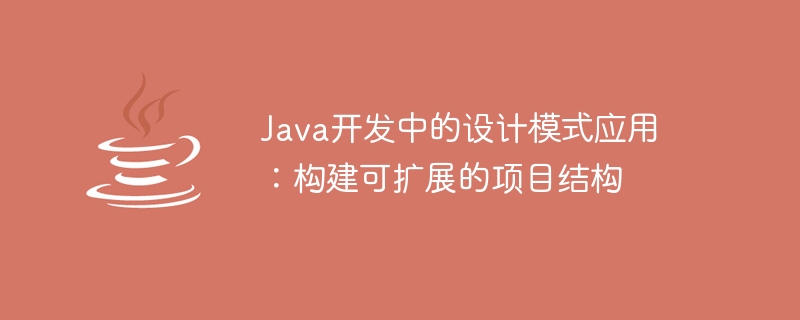

Design pattern is a set of methodologies summarized by experienced developers in software development to solve specific problems. In Java development, the reasonable application of design patterns can help us build an scalable project structure, making the code more flexible, easier to maintain and expand. This article will introduce several common design patterns in Java development and explain their application in building a scalable project structure.
The singleton pattern ensures that a class has only one instance and provides a global access point. In Java development, the singleton pattern is widely used for objects that require only one instance, such as database connection pools, thread pools, etc. Through the singleton mode, we can centrally manage the creation and destruction processes of these objects to avoid the waste of resources caused by multiple instances.
Factory Pattern is a creational design pattern that abstracts the instantiation process of objects. Through the factory pattern, we can hide the implementation details of specific classes and provide a unified interface to create objects. In this way, when a specific class needs to be modified, only the factory class needs to be modified without modifying the caller's code, thus achieving code decoupling and scalability.
The proxy pattern is a structural design pattern used to add some additional functionality when accessing objects. Through the proxy mode, we can add some pre- and post-processing logic to the methods of this class without changing the original class. In Java development, the proxy mode is often used to implement AOP (aspect-oriented programming) to implement functions such as logging and performance monitoring.
The Observer pattern is a behavioral design pattern used to implement one-to-many relationships between objects. In the Observer pattern, when the state of an object changes, all objects that depend on it are notified and automatically updated. In Java development, the observer pattern is often used in event processing, message notification and other scenarios.
The strategy pattern is a behavioral design pattern that is used to decide to execute different logic based on different algorithms or behaviors. In the strategy mode, we can abstract the variable parts and dynamically determine different execution methods by switching strategies. In Java development, the strategy pattern is often used to implement flexible changes and expansions of business rules.
The above are several common design patterns in Java development. Their application can help us build a scalable project structure, making the code more flexible, easier to maintain and expand. Of course, in actual projects, we should reasonably select and combine these design patterns when needed, and make optimal design decisions based on the actual needs of the project. At the same time, we must also pay attention to following design principles, such as the single responsibility principle, the opening and closing principle, etc., to ensure the quality and maintainability of the code.
In short, the application of design patterns in Java development is crucial. By rationally using design patterns, we can help us build a scalable project structure and improve software development efficiency and code quality. As Java developers, we should learn and understand various design patterns in depth and use them flexibly in actual projects to achieve better software design.
The above is the detailed content of Application of design patterns in Java development: Building scalable project structures. For more information, please follow other related articles on the PHP Chinese website!




